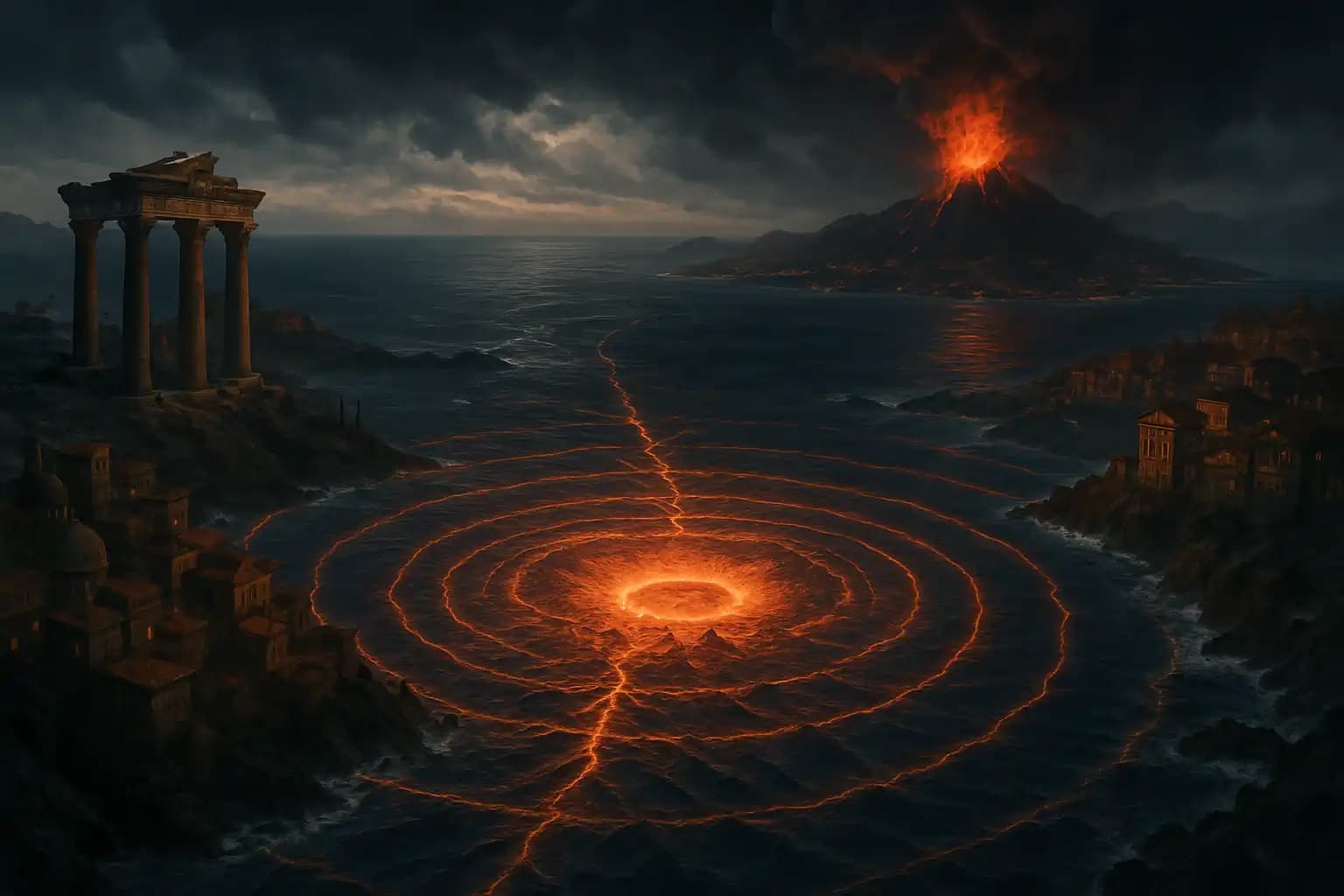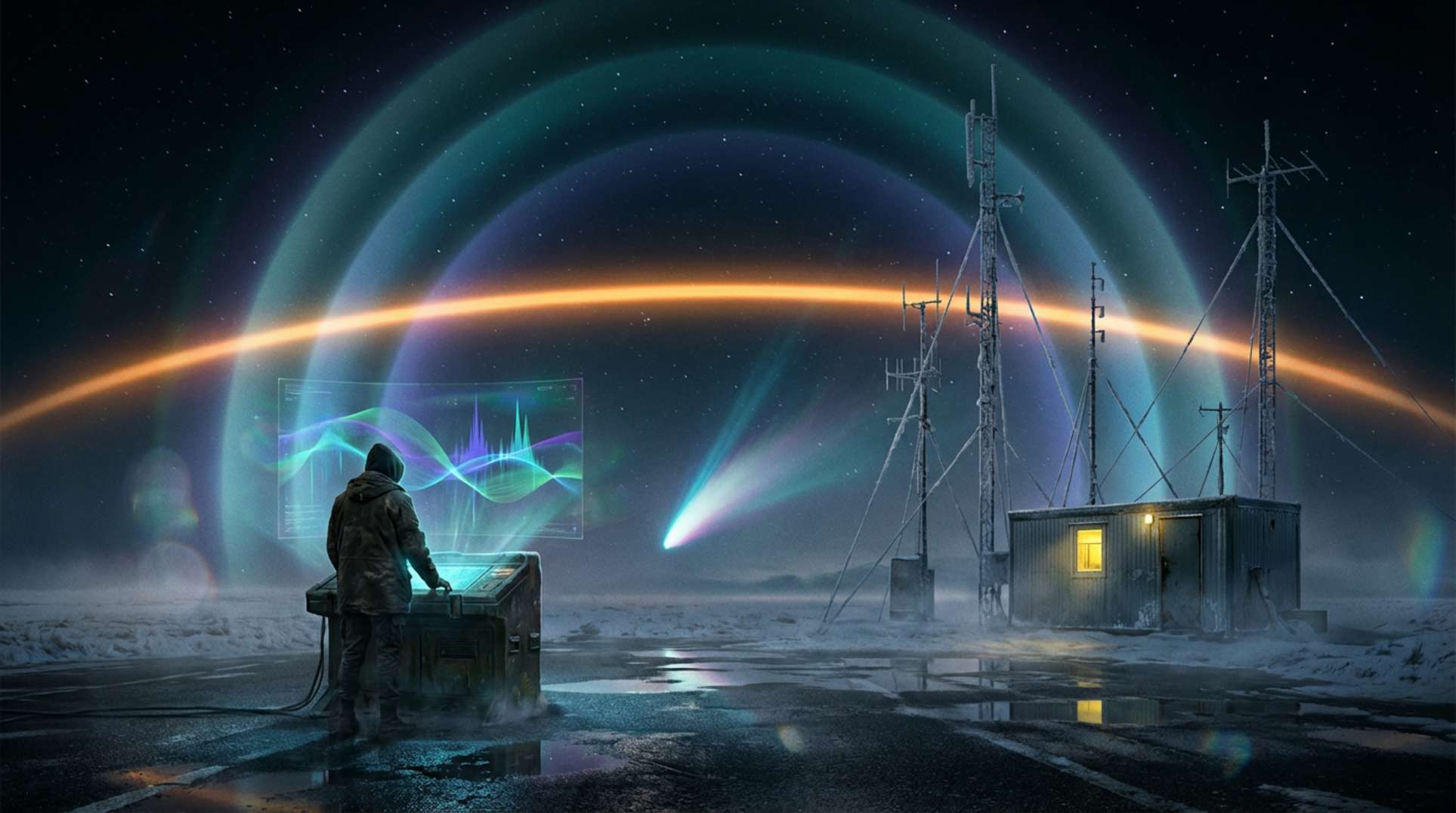Restlessness stirs beneath the Mediterranean. In May 2025, two magnitude 6+ earthquakes shook the sea floor near Crete. These were not just routine shocks; they belong to a swarm that has seismologists—and doomsday preppers—on alert. This volatile network stretches from Greece to Italy’s most dangerous volcanic regions. Campi Flegrei, the colossal caldera west of Naples, shows its most intense seismic activity in decades. Speculation runs high: Are the Mediterranean’s subterranean giants awakening simultaneously? What does this mean for millions living in their shadow?
Earthquakes as strong as those in May don’t merely jolt tectonic plates—they resonate through interconnected geological systems. Recent quakes occurred at unusual depths, spurring scientific scrutiny. The most urgent question arises: Are these quakes transferring stress along ancient faults to regions like Campi Flegrei? Its last mega-eruption reshaped Europe’s history and habitability.
Deep Earthquakes Rock the Aegean: Unprecedented Seismic Patterns
The May 2025 seismic double-feature saw earthquakes of magnitude 6.0 and 6.1 jolting Crete at 74 km and 64 km beneath the surface. Ongoing monitoring from Volcano Discovery reveals that these shocks are not typical aftershocks; they signal deep mantle disturbances. Their timing coincides with a surge of seismic swarms under Campi Flegrei, where scientists recorded over 6,000 quakes in 2024 alone (Live Science outlines these recent seismic storms).
Determining whether these Mediterranean events resonate across regions is complex. However, geophysicists like Stefan Burns suggest that deep tremors can redistribute stress across continents. This notion implies that a tremor off Crete might awaken a dormant supervolcano near Naples. Such scenarios echo unsettling doomsday studies, including historic volcanic winters and the far-reaching effects of geological upheaval.
Campi Flegrei: The Sleeping Giant Beneath Naples
For millions around Naples, Campi Flegrei represents not just geology but destiny. It lies beneath modern towns steeped in ancient myth. This region features 24 craters, fumaroles, and hidden magma chambers, turning it into a powder keg, as detailed in Wikipedia’s overview of the Phlegraean Fields. Its most significant event, the Campanian Ignimbrite eruption 39,000 years ago, blanketed Europe in ash and impacted human evolution.
The caldera is currently restless. Scientists at the Vesuvius Observatory monitor volcanic swarms, bradyseism (the slow rise and fall of the ground), and hydrothermal disturbances. Recent studies raised alarms about a seismic crisis in 2025, marked by multiple M3+ quakes and rapid ground deformation. This prompted local authorities to reevaluate evacuation protocols (Live Science highlights the potential threat).
While Campi Flegrei isn’t the only formidable volcano in Europe, its scale and proximity to Naples make it a chronic concern. This anxiety echoes broader catastrophe scenarios. Such themes echo throughout detailed explorations in apocalypse predictions.
Gigantic Ancient Caldera: A Lost Chapter in Mediterranean Geology
Amid earthquake concerns, research hints at something grander below the Mediterranean: evidence of an immense, ancient seafloor caldera, potentially rivalling today’s supervolcanoes. Some quake scholars, like Stefan Burns, caution against overstating these claims. Nevertheless, tuff deposits and caldera-like structures in seismic scans suggest a turbulent volcanic history predating Campi Flegrei. These findings align with patterns of mysteriously vanished civilizations, as explored in ancient unsolved mysteries.
Connecting the restless seismic areas from Crete to southern Italy, geologists are uncovering evidence of a vast volcanic province shaped by catastrophic events. Could this “lost” caldera, buried beneath layers of sediment, serve as an ancient analogy for current Mediterranean volatility? The answer may hold significance beyond academic curiosity; it could outline new risk zones for our era, as discussed in disaster preparedness scenarios like solar storm survival guides.
The Human Factor: Science, Preparedness, and the Edge of Disaster
As seismic warnings mount, the critical question shifts from whether these forces connect to how societies adapt. The Mediterranean has long served as a crossroads for civilization, commerce, and calamity. Preparedness efforts around Campi Flegrei highlight this challenge, involving emergency planning, international monitoring, and speculation about disaster-induced migration. These threats are far from idle, as seen in stories covering looming crises, from North American geological hazards to alarming Antarctic testimonies.
Preparedness isn’t merely for the anxious. Lessons from Naples, Crete, and beyond emphasize vigilance. Communities must watch the faults, know their escape routes, and above all, never assume the deep sleeps soundly. For deeper dives into the unknown and connections between the earth’s oddest happenings, Unexplained.co has comprehensive resources—no tinfoil hat required.





